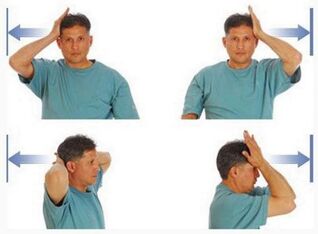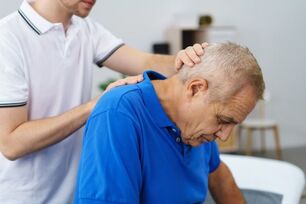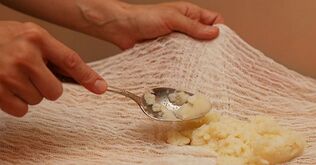Osteochondrosis can develop in any part of the spine, but most often it affects the neck and lower back. The disease is inflammatory-dystrophic and persistent, as a rule, in a chronic form. Cervical osteochondrosis is more frequently diagnosed in women, while men are more susceptible to lumbar spine osteochondrosis.
General Description
Most people spend their days sitting: at school, college, office, driving a car, or at home with a computer. Over time, many begin to feel uncomfortable, and then feel pain after sitting for a long time. Posture worsens, trunk visible, difficult to straighten or twist the body.
This is how 1 appears, the early stage of osteochondrosis, where it is easiest to overcome the disease. If you do not take steps, then in the future it threatens to turn into a chronic form with normal deterioration. In some cases, this case ends in disability.
REFERENCES: osteochondrosis of the cervical spine accounts for half of all types of pathology.
The clinical picture of cervical chondrosis includes:
- pain syndrome caused by nerve root compression. Depending on which vertebrae and discs are damaged, pain can spread to the shoulders, forearms, or entire arm. Characterized by headache, stress increases;
- sensory disturbances, especially in the hands and fingers. May be numbness, burning sensation, or creeping;
- decreased strength and muscle tone in the affected area, sometimes wrinkled muscles and cramps;
- increased sweating, discoloration of the skin - pale, redness;
- chest pain;
- vertebral artery syndrome occurs when one of the two arteries is pinched, which is accompanied by severe headache, tinnitus, nausea, dizziness, more rarely - swallowing disorders.
There is no drug that can completely eliminate the cause of osteochondrosis. But you can get rid of the symptoms and prevent the possibility of recurrence with the simplest method.
How is chondrosis treated?
In the acute phase, it is rare for anyone to go without pain medication. The most popular and effective are cheap drugs based on sodium metamizole, as well as NSAIDs - non-steroidal anti-inflammatory drugs.
For severe pain, the attending physician may prescribe analgesics in injections, but more often these medications are prescribed in tablets and supplemented with ointments. Complex therapy also includes physiotherapy, massage and exercise therapy. Massage sessions and therapeutic exercises are usually started after relieving acute symptoms.
What you can do at home
Treatment of cervical osteochondrosis at home is a prerequisite for most doctors. It is impossible to cure this disease with drugs and physiotherapy alone, they only relieve temporary symptoms. The remission period can be extended with regular dose physical activity, the use of self-massage techniques, therapeutic compresses and infusion boosters.
By following the instructions correctly and following the medical advice, encouraging results can be achieved. Doing your own massage saves money, the use of decoctions and herbal infusions instead of some drugs reduces the negative effects of drugs on the body.
Home therapy, like traditional treatments, helps to quickly stop the pain syndrome, normalize cerebral circulation, and improve sleep. With the help of available products, you can get rid of nervousness and irritability, stabilize blood pressure, restore normal sensitivity to the neck and collar area.
exercise therapy
Therapeutic training is included in the main standard of treatment for neck chondrosis and is chosen by exercise therapy instructors. The first 1-2 sessions are held at the polyclinic or health center, and then the patient can train at home.
Exercise 1. PI (starting position) - standing, feet shoulder-width apart. Tilt your head to the right, left, front and back. All movements should be slow and smooth, you should move your head carefully, not throwing it away suddenly.
Exercise 2. From the same PI, turn the head to the side. At an extreme point, direct your gaze backwards. Sometimes it is not possible to turn your body at first, and you can not force the event. Over time, the movement of the "block" limit will disappear.
Exercise 3. Lift your shoulders back, carry as many shoulder blades as possible. Hold this position for a few seconds, then bring your shoulders forward and round your back. His movements are similar to those of the famous "cat", but performed in a standing position.
Another effective set consists of the following exercises:
- Stand or sit, place your palms on your forehead and press your head on it, overcoming the resistance of your hands. Maintain this position for 15-20 seconds.
- Place your hands on the back of your head, press with the back of your head on your hands, and with your hands on the back of your head.
- Place your palms on your right ear and press together, trying to tilt your head toward your right shoulder. Then turn the side and tilt the head to the left shoulder, placing the left hand on the left ear.
- Turn your head to the side, placing your palms on your left or right cheekbones. First, the hand rests on the right cheekbone, and the head tries to turn to the right, overcoming the resistance of the hand. Then the palms rest on the left cheek, and the head turns to the left. Pressure time is 15-20 seconds.
- Hold the bottom of the head until the thumb is on the chin and the rest is on the back of the head. Slowly pull your head up, letting it swing from side to side like "pulling the cork out of the bottle". You can not turn the head, the cervical spine must be straightened. The duration of training is 15-20 seconds.
- Spread the arms sideways and rotate first with the left, then with the right, and then with both shoulders. This exercise is very useful for those who feel tense in the neck and shoulder area.
- Stand or sit with your back straight, "roll" your head from left to right and in the opposite direction, tilt down as much as possible at the midpoint and try to approach the chest with the chin. The number of repetitions is 10-12.

There is no need to complete the above complex if some exercises cause severe pain and discomfort. With a doctor’s agreement, you can also hang on to horizontal bars or bars, get in for swimming, water aerobics and other permitted sports.
Self Massage
Self massage helps treat cervical osteochondrosis at home. Thanks to the gentle pressure on the neck, salt retention is prevented, blood supply and tissue nutrition are improved, and pain intensity decreases. During the procedure, the muscles relax, metabolic processes are accelerated, and blood pressure is stabilized.
If you wish, you can visit a massage therapist at the clinic or perform a procedure at home. However, it is better that you massage your own neck, after learning the basic techniques and determining what needs to be resolved. It is also important to know which zones are best to avoid or act with caution.
Massage techniques are relatively simple, and it is very possible to master them. The basic rules are:
- the direction of movement is from the center to the edges, that is, from the spinal space to the shoulders and back of the head;
- is allowed to massage the cervical area only with the help of fingers, without the use of any tools;
- strong stress is excluded: you need to act gently and gently;
- the muscles of the back and sides of the neck are caressed, rubbed and kneaded;
- massage is done in a sitting position;
- sessions begin with caressing, followed by rubbing and kneading movements, also ending with caressing;
- duration of the procedure - 5-10 minutes.
If there are no contraindications and the consent of the attending physician, you can use Kuznetsov applicator. This affordable and effective device is a roller made of fabric or oil cloth with a raised element - a round or square barbed plate.
The app is easy to use - place it under your head and lie on it. Soft needles bite the skin, increase blood flow and act on biologically active neck points. The duration of the procedure starts from a few minutes and gradually increases.
First aid for getting worse
If cervical lumbago occurs suddenly, a visit to the doctor or call a specialist home is the ideal solution. If help is delayed, a number of steps must be taken to relieve pain and protect the vertebral structure from possible injury.
CONVENIENT POSITION
First of all, you need to prepare the cervical spine and restrict as much as possible (preferably exclude) physical activity. You should lie on a flat and simple bed or a thick blanket on the floor. Floors that are too hard, such as blank board floors or airy feather beds, will not work.

If acute pain in the neck is caused by osteochondrosis, it is recommended to wear a Shants collar, which will prevent the neck from moving or twisting freely. As a result, the load on the cervical muscles will decrease, and local blood circulation will improve.
If there is no Shants collar, you can make homemade tires out of cardboard and cotton wool, until the neck is glued.
REFERENCE: before seeing a doctor, you should not use scrubs and warming ointments, massaging your neck. In some cases, such actions can lead to very unpleasant complications.
LOCAL FUND
In the first hours of an attack, it is permissible to use ice or cold compresses, but there must be a layer of cloth or gauze between it and the body. This will prevent hypothermia and increase pain.
Allowed to use anti-inflammatory and analgesic ointments and gels based on diclofenac, ibuprofen, nimesulide and indomethacin. It is forbidden to use products such as Finalgon, Viprosal, Capsicam, and other preparations with baking components in the composition.
Warming and rubbing ointments have a local irritating effect, increasing blood flow to the neck, which can increase swelling and compression of nerve endings. In the cervical spine, special care is needed, as improper action is met with a sharp increase in blood pressure.
In the event of an increase in osteochondrosis, massage is not performed because of the increased risk of pain and reflex muscle spasms. In addition, the cervical vertebrae are hypermobilized, and careless movements can exacerbate the condition.
MEDICINE
Medication can help fight pain, but remember that pain is a defense mechanism. With forced removal, nothing will stop you from making sharp head movements, which will make the situation worse. Therefore, after taking analgesics, you should observe a bed rest that is soft and preferably at least 2-3 days.
Severe pain, which cannot be stopped with pills and intramuscular injections, is removed with the help of novocaine blockade. The procedure is performed strictly in a hospital environment: a local anesthetic is injected next to the damaged vertebrae and suppresses pain. Blockers are done only according to instructions and can cause side effects in the form of allergic reactions and infectious complications.
Prohibited actions
Sharp pain in the neck is a good reason to consult a doctor and a thorough examination. Only after an accurate diagnosis is made, the most effective treatment tactics and methods in a particular case are determined.
It is completely impossible to get rid of pain in any way - for example, freely trying to correct a moving vertebra or asking for similar help from a non-expert friend. Do not take painkillers in large doses uncontrollably. Even folk remedies can be harmful if the diagnosis is not yet known.
The right movement regime is very important: if in the degree of deterioration of movement should be as limited as possible, then after a few days physical activity should be expanded. Exercising from an exercise therapy complex will help improve blood circulation, reduce pain intensity and slow down the inflammatory process. In addition, a properly chosen exercise will help strengthen the muscular corset that supports the spine.
How to cure osteochondrosis forever
Complex drug treatments consist of several groups of drugs:
- NSAIDs and analgesics during exacerbations; relax muscles to relax muscles;
- chondroprotectors, restoring the intervertebral disc cartilage tissue;
- vitamin and mineral complexes containing vitamin B
Various ointments, gels and plasters - for example, Nanoplast plasters - effectively complement the treatment. Today, pharmacies have a wide range of local medicines that can be used both during exacerbations and in the recovery phase:
- anti-inflammatory;
- chondroprotective;
- homeopathy.
When the acute symptoms have subsided, a warming agent can be used.
Traditional methods
Honey potato wrap is made from raw grated potatoes and honey. Both components are taken in equal amounts, mixed and placed on a cloth or gauze. The compress is applied to the neck for about 45 minutes. This procedure is performed twice a week.

Wax or paraffin must be diluted and applied to the sore spot, avoiding contact with the spine itself. It is recommended to make such an application every two days.
Knead the water and rye flour mixture to a medium density, roll out the cake and stick it around the neck. Lubricate the skin with turpentine before use. Cover the compress with polyethylene and a warm cloth, holding until a burning sensation appears, but no more than 15 minutes. You can perform the procedure every day.
Herbal preparations for oral administration are prepared from the following ingredients, taken in equal proportions:
- chamomile;
- yarrow;
- St. John's wort;
- calendula;
- thyme;
- dandelion leaves.
2 hb. l. mix the mixture in a thermos, pour with a liter of boiling water. Take 3 times a day before meals for ¼ glasses.
So, at home, you can do many things to get rid of unpleasant diseases like osteochondrosis. When performing all medical appointments, including taking medication, performing physical and massage procedures, performing therapeutic exercises, it is possible to avoid their development and prevent relapse.
What to do now
Such statistics make up more than 45% of people over the age of 35 have joint disease! It all started small: somewhere they were too strong, somewhere they lifted the load, somewhere they just blew their necks. The joints are designed in such a way that the main problem begins with inflammation of the joint fluid, then softens the cartilage and, as a consequence, deformity.
One important thing to keep in mind: joint disease will take you to a wheelchair in less than 3 years! The disease develops many times faster if you are overweight, because in this case there is a double load on the joints.












































